JEROME SULLIVAN: Project K13
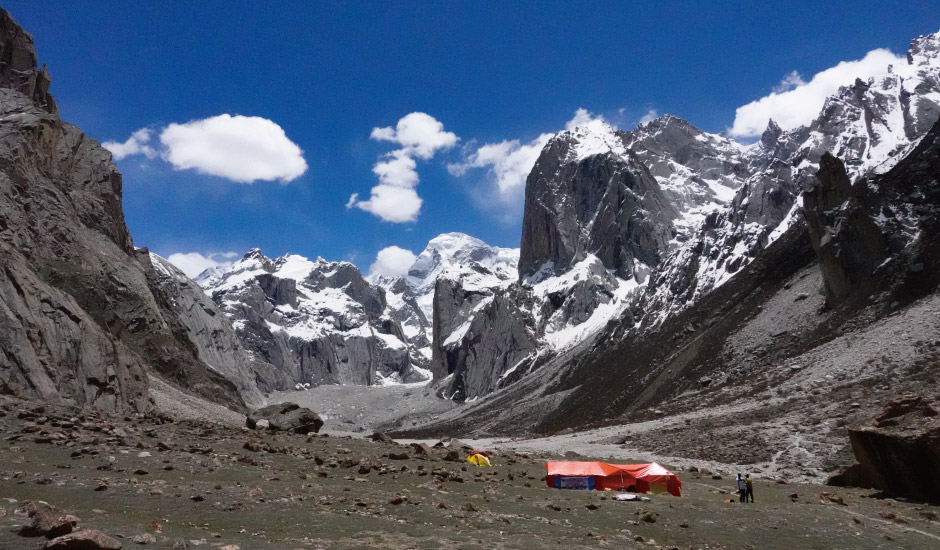

During the month of June 2021, I embarked on a beautiful voyage in the company of Martin Elias, Jeremy Stagnetto and Victor Saucède. We had planned a climbing trip to Pakistan and our destination felt full of mystery. We had in our possession one single photo of Dansam Peak (aka K13), taken from a long way off and graciously sent to us by American climber Steve Swenson. The photo showed the North Face of Dansam and its 3 prominent pillars.
The Kondus Valley has been forbidden for the last 40 years, the only ascent in the zone being of a Japanese ascent of the west summit on Dansam in 1980 (via the easier south face). Though we did not know this at the time as we had been told by the authorities that all the summits of Dansam were unclimbed.

Covid restrictions in Pakistan made departure from France complicated and we feared that the expedition would be compromised, but a streak of luck had us aboard the plane for Islamabad and connecting to Skardu by the end of June. We quickly reached our promised land: the Kondus Valley. In this deep gash in the earth, nestled between a forest of granite spires, lies the lush green village of Khor Kondus. Fed by the waters of seven thousand meter summits, Sherpi Kangri and Biafo Kangri, the fertile lands allow the locals to grow fields of wheat and feed the Zomoh (yak/cows).
Our arrival timed with the sun dipping across the horizon and did not go unnoticed. As we drove through the village, we turned around to see a hoard of children swarming behind our vehicle. The adults quickly arrived and bid us welcome.
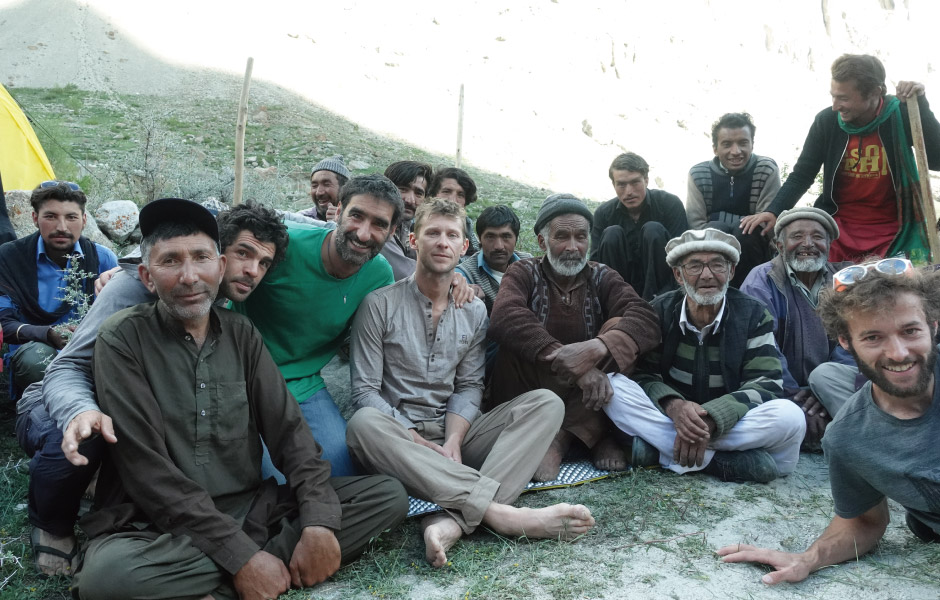
The next day they explained to us that Dansam peak was also named the “dangerous mountain” and we would soon understand why. After visiting the hot springs and spending a couple days meeting the locals, we made our way up to our base camp: at 4000m a grassy valley bed strewn with beautiful boulders, at the foot of the glacier that gives access to the cirque of the Dansam North face. The face was not visible from base camp and we were very excited to get a first glimpse of what awaited us. The next day, 4 hours of hiking on moraines had us pass the bend of the glacier and we immediately understood why it is nicknamed “dangerous mountain” by the local shepherds.
The 3 immense pillars of stone that we had identified in the photo were capped and ornated with very active and impressive seracs. The eastern summit appeared to us like a giant’s armchair. The arms rests, respectively the immense eastern and central pillars stood out boldly. In the middle the icy seat was made of deep blue and fractured ice falls. The west pillar, standing on its own, felt to us as the most elegant feature. The ridge line shot out across the sky, its steepness softening only towards the summit. It also had the appeal of being the safest feature, not threatened by any serac.
Being below this face, where no climber had sunk his axe or grabbed, was a real treat! We could choose the most logical and appealing line. It felt like being a kid in a candy shop with unlimited credit.

During the next two weeks we enjoyed perfect blue skies. We stopped looking at the weather forecast and started to believe the weather would stay that way during the whole month. We spent the days acclimatizing and carrying gear from base camp to the foot of the wall. When we felt ready and anticipated that the ice conditions would deteriorate quickly with the rising temperatures, we made plans to climb. Then it started snowing.
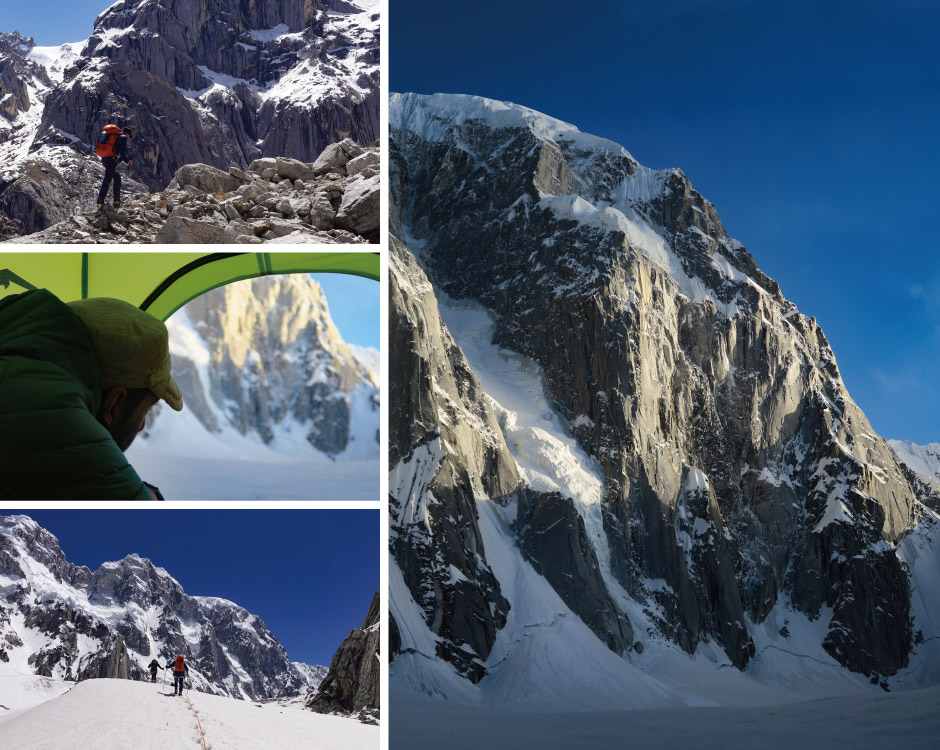
For 10 days the weather was awful. The temperatures plummeted and every day we woke up with a fresh blanket of snow in base camp. The end of the trip was approaching, and we all had guide work waiting upon return so could not change our flights. Martin believed the new moon would bring a change in the weather. We waited patiently until the last moment. The waiting was fustrating as the deadline came nearer and we faced the possibility of going home without even an attempt. Eventually the moment came! With the new moon it was time to harvest the seeds we had sown.

On the 24th of June we set off for the advanced base camp although the weather was not so nice. 7 hours later we were at the foot of the wall. The next morning, we set off for our 6 day ascent. After having climbed 400m of zigzagging snow ramps of terrible and inconsistent snow we set up camp on a snow ridge dubbed “les pentes a Damel”, Djamel being Jeremy’s nickname. Here we would wait out the snowstorm that followed for the next 24 hours. The chosen line being a natural gully, it channeled the falling snow. Although our tent was not directly exposed, the aerosol caused by the frequent avalanches would blast the tent and cause us to worry about our safety and the success of our ascent. The next day we left under a light snowfall and heavy spindrifts. We were now in the central gully system and the ice quality was great. Between shouts of “spindrift!” and ‘hoods on!” we made good progress. Some pitches were quite steep and physical and others more moderate and hard on the calves. This ice gully led us to another snow rib we called “le linceul”. We reached this quite late in the night and dug out a poor bivy sight. The night was short.
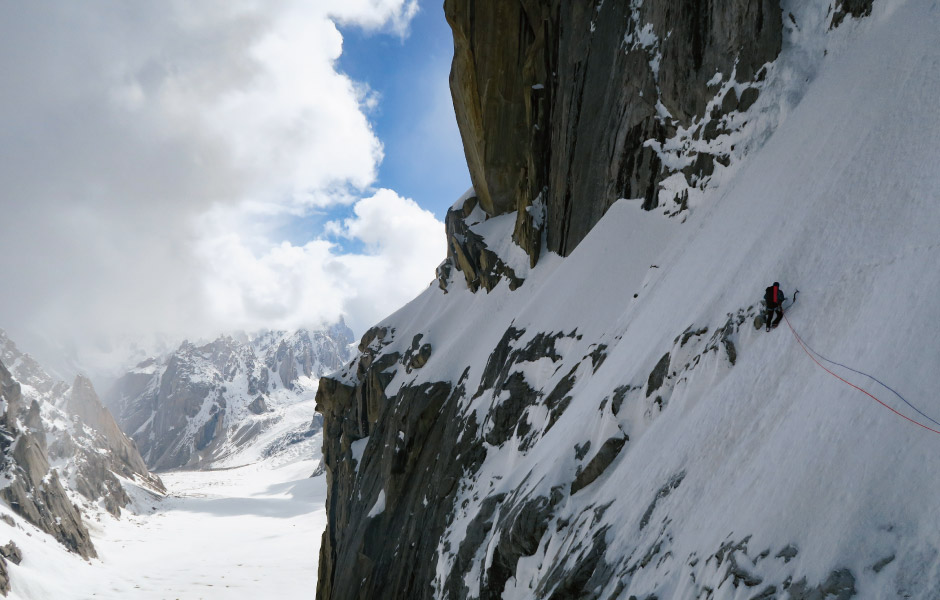
The next day was the crux, as we needed to breach the 400m of steep rock leading to the summit slopes. Mixed pitches of great quality up to M6, with some portions of vertical and even overhanging ice discovered themselves. Victor led the hardest pitch: an overhanging ice smear that was improbably fortunate. The ice had formed in the most improbable places because of the bad weather the past weeks! As we would discover descending the route and with rising temperatures, the good conditions were quite ephemeral. Without all the ice the headwall would have been quite complicated as the rock was of poor quality. This was a great climbing day as we marveled on the quality of the climbing at 6000m. Looking behind all the Karakorum were appearing: K2, G1, G2, G4, Broad peak….
We reached a decent bivy spot on a exposed and corniced ridge before nightfall and went to sleep with good hopes of reaching the summit the next day. The next day would be full of suprises!
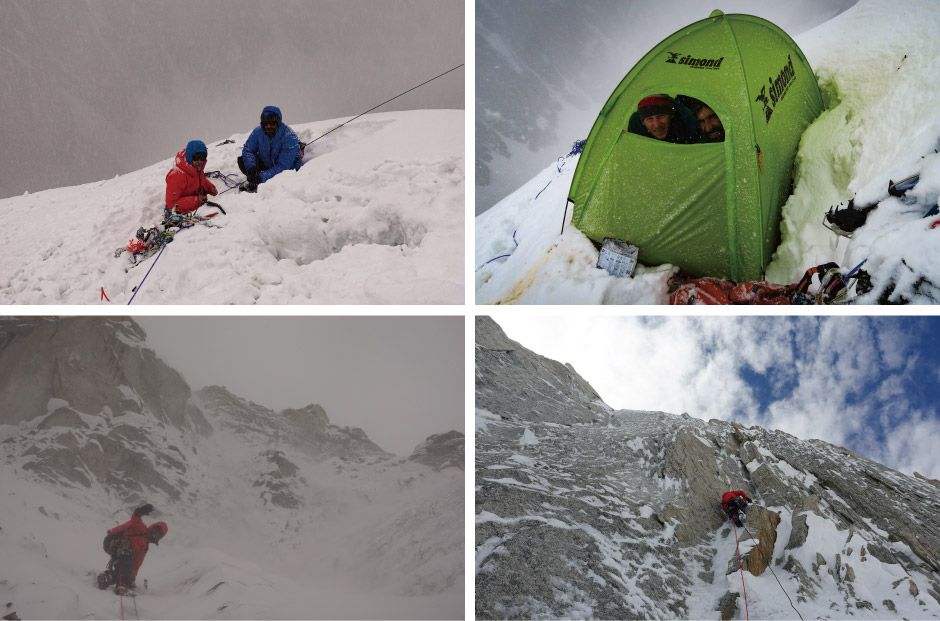
On the 29th we woke up to a starry night. Fatigue was showing and it was difficult to get started. We left the tents and rock gear and departed for the summit at sunrise. We were surprised by the difficulties. We had supposed the more moderate terrain would be quickly overcome, but the bullet hard ice hidden beneath 10 cm of powder snow proved very time and energy consuming. On 60 degrees slopes we had to build anchors and it took us a good part of the day to climb the 400m separating us from the summit.
Then came our second surprise. As the rock nipple that is the west summit appeared (invisible until the last moment) to Martin who was leading he started to laugh. I thought “Oh there must be another obstacle barring our path”, but as I approached, I saw the object of his laughter. A fixed piece of rope was dangling from an old piton! We all started to laugh at the absurdness of the situation. Although we really did not care so much that the summit had already been climbed, it felt ridiculous to have put in such effort and discover a piton on the last 20 meters! It later offered an interesting reflection on the personal and collective worth of climb, the first ascent of a route or a summit. The route we had just climbed was void of any trace of previous ascent. The north face of Dansam (leading to east or west summit) had never been climbed.
Our ascent had been shrouded with doubts and the unknown, specific to pioneering a route and mountain. That was what was important to us. The details of the Japanese ascent remain unknown to us at this point but we suppose that they ascended the snow slopes of the south face, from the still forbidden Goma side, as the fixed ropes on the summit pointed to a heavy style of ascent. We found no trace of passage on our pillar (which seems to be the only feasible way up to the west summit on the north face). Our joy on the summit was untarnished by the discovery of the old rope and we hugged and laughed and even shed a tear!
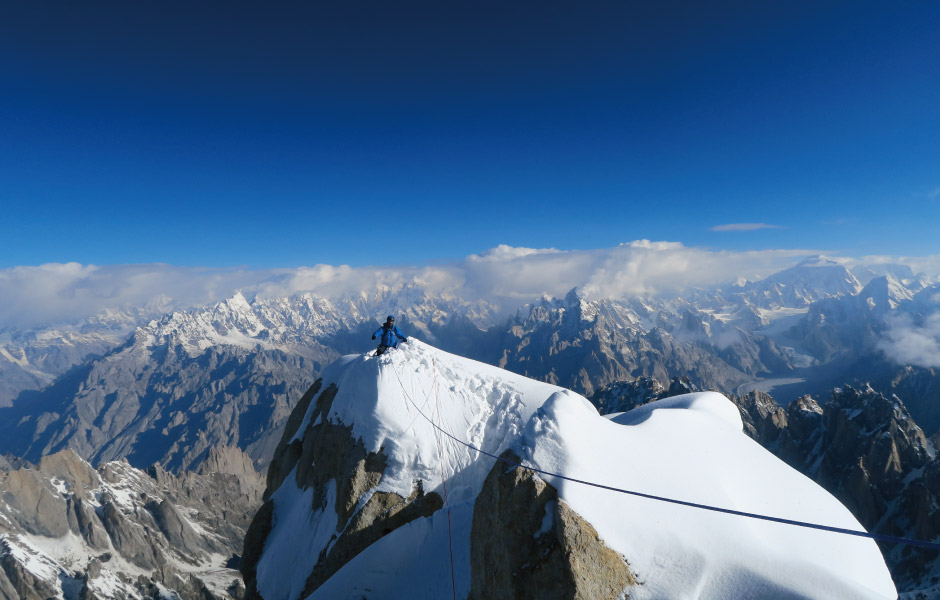

We descended from the summit in a day and a half, rappelling our route, and walked into base camp on the 29th at night. We felt really privileged to have climbed an aesthetic line in such a pristine place. We named the route “harvest moon” as the moon change brought us the weather we needed. The next day we packed up base camp early and set out for our next adventure: catching the plane in Islamabad in the little time we had left!
The Kondus Valley holds mountaineering treasures for future parties and the villages of Khor Kondus and Karmanding are truly amazing places. The locals are a humble people who live in very harsh conditions but are extremely welcoming. The surrounding rock spires offer endless possibilities although the rock quality is not always very good. And the hot springs are a great place to relax! Huge thanks to the Balti people for such a warm welcome.
A huge thanks to mont bell for supporting me in this trip!



Montbell sleeping bag review


Seamless Down Hugger WR 900
For Jerome's expedition, Montbell provided a customized Seamless Down Hugger WR. The bag was filled with down to Jerome's specifications. Aside from the extra down, all other aspects of the bag are the same as the currently available Down Hugger WR 900's. Below is Jerome's review of his bag.
I have just done the first ascent of Dansam west north face using the seamless down hugger. This sleeping bag is simply amazing.
First of all it has a gore-tex outer shell. A recurring problem in the ultra light tents we use in expeditions is condensation. Because the tents are so light they only have one layer and are not very breathable. Because they are so small, the sleeping bag touches the side walls and is wet in the morning!
Since we have no time to dry out the sleeping bag in the early morning the moisture keeps accumulating, and after a few days the down sleeping bag is completely useless weight!
On this trip with the seamless down hugger, on the sixth day of the ascent, I still had a dry and warm sleeping bag. I was afraid of condensation in the bag due to the gore-tex layer which was not the case. Also because of the seamless construction, the sleeping bag has a unique weight/warmth ratio. It is without a doubt the best sleeping bag I have ever used!
-
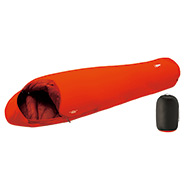
Seamless Down Hugger WR 900 #1 Long
Price: $739.00 -

Seamless Down Hugger WR 900 #2 Long
Price: $649.00 -
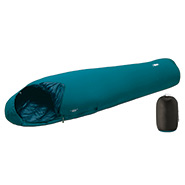
Seamless Down Hugger WR 900 #3 Long
Price: $539.00 -
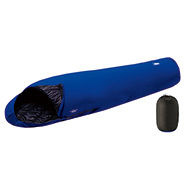
Seamless Down Hugger WR 900 #5 Long
Price: $469.00
-

Seamless Down Hugger WR 900 #1
Price: $679.00 -

Seamless Down Hugger WR 900 #2
Price: $599.00 -
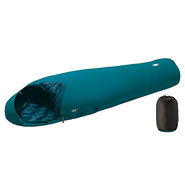
Seamless Down Hugger WR 900 #3
Price: $499.00 -
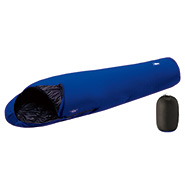
Seamless Down Hugger WR 900 #5
Price: $429.00
Montbell Gear Used

-
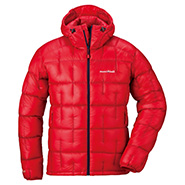
Plasma 1000 Alpine Down Parka Men's
Price: $479.00 -

U.L. Thermawrap Parka Men's
Price: $219.00 -

Tec Thermawrap Pants Men's
Price: $219.00 -
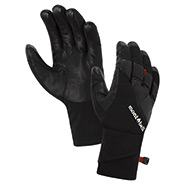
Ice Climbing Gloves
Price: $145.00 -
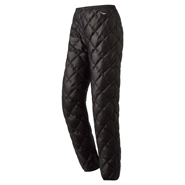
Light Down Pants Men's
Price: $249.00
Jerome Sullivan

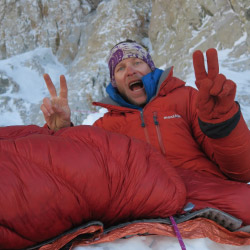
Born in the United States to an American father and a French mother, I was able to take the worst of both cultures to become the traveler I am today. As a professionnal mountain guide, I share my time between Chamonix in the summer, the Ecrins in the winter and regular pilgrimages in search of walls that fuel my dreams. A beautiful goal in the mountains and good friends make me the happiest person in the world.
Important climbs in my life as a mountaineer:
"Royal Flush" (1000m, 7c), Fitz roy, alpine style, December 2011. 5th alpine style ascent of the east pillar of Fitz roy, Patagonia.
First free ascent of the DRU West pillar since the collapse. Combination of the "voie des papas" and a new variation "los gitanos". 1000m, 7b, Chamonix, March 2012
Award of the Spanish Climbing Federation for the best ascent of the year.
First ascent of "El pillar del sol naciente" (1000M; 7b, A1, M6, WI 6) Cerro Murallon, Patagonia.
November 2012.
Spanish climbing federation award for the best ascent of the year.
First ascent of Mont Boucansaud and opening of the Iliad (900m, TD).
Révélations, Alaska, March 2014.
First ascent of the Pic Pyramide and opening of the "Odyssee" (1100m, M7, 6b, 90°, A1).
Révélations, Alaska, March 2014.
First Ascent of "Hasta las webas", Cerro Riso Patron. (1000m, ED). Patagonia, September 2015.
Piolet d'Or 2016
First Ascent of "Ballas y Chocolate" (900m WI 5+, A2, M6+) on Cerro Adela, Patagonia, October 2015.
Spanish Climbing Federation Award for the best ascent of the year
First Ascent of "Metrophobia" (1700m, 5.11d, A2, 120 degrees). Approach by kayak, 340 km in totalautonomy. Greenland.
Attempt at the South Face of L'amin Brakk, K6 Massif, Karakoram.
First overall ascent of
"El Faro" Cerro San Lorenzo, "La Milagrosa", 1200m, A3, M7, 6a. Patagonia, October2018.
First Ascent of "Mad Max" on the east face of the great jorasses. 7A, 800m.

